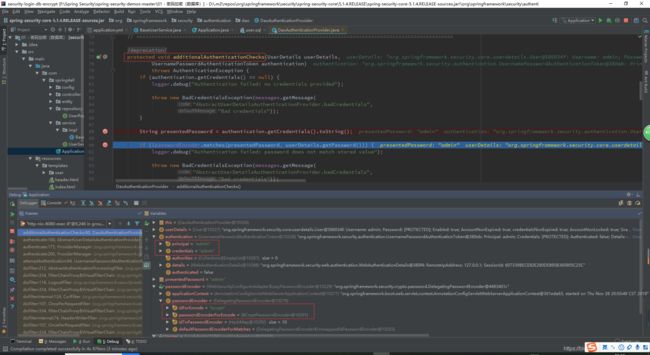- 初学Spring AI 笔记
笑衬人心。
大模型学习spring人工智能笔记
目录SpringAI简介依赖与环境配置基础概念集成OpenAI(或其他LLM提供商)Prompt模板引擎Embedding与向量数据库SpringAIChatClient使用SpringAI和LangChain对比常见问题与建议SpringAI简介SpringAI是Spring团队推出的人工智能集成框架,旨在简化AI模型(如OpenAI、HuggingFace、Mistral、AzureOpenA
- Spring Cloud Bus 和 Spring Cloud Stream
中国lanwp
springboot
SpringCloudBus和SpringCloudStream都是SpringCloud生态中的消息通信组件,但它们的定位和使用场景有显著区别:1.SpringCloudBus核心定位:分布式系统的消息广播(配置刷新、事件传播)。典型场景:通过消息中间件(如RabbitMQ、Kafka)广播配置变更事件,实现所有微服务配置的集中刷新(如结合/actuator/refresh或/actuator/
- Spring Boot 2 多模块项目中配置文件的加载顺序
中国lanwp
springbootjava后端
SpringBoot2多模块项目中配置文件的加载顺序在SpringBoot2多模块项目中,配置文件的加载遵循特定的顺序规则。了解这些规则对于正确管理多模块应用的配置至关重要。一、默认配置文件加载顺序SpringBoot会按照以下顺序加载application.properties或application.yml文件:当前模块的config目录(位于classpath根目录下)classpath:/
- Spring 中 Bean 的生命周期
笑衬人心。
JAVA学习笔记springjava后端
一、什么是Bean生命周期?Spring中的Bean生命周期是指一个Bean从被容器创建到最终销毁所经历的一系列过程。它体现了SpringIOC容器在管理Bean实例时所执行的各个钩子流程,包括初始化、依赖注入、增强处理、销毁等多个环节。二、Bean生命周期完整流程(逻辑顺序)1.实例化(Constructor)2.属性注入(依赖注入,DI)3.感知阶段(Aware接口)4.初始化前处理(Bean
- Spring框架-IOC
五月茶
springjava后端
1.Spring框架的介绍Spring框架是一个开源的JavaEE应用程序主要核心是IOC和AOP两大技术IOC:InversionofControl,控制反转。它是通过将控制权从应用程序中移出,使得对象的创建和管理由框架来完成,从而降低系统间的耦合度。DI:DependencyInjection,依赖注入。它是一种设计模式,属于控制反转的一部分。其基本思想是将对象的依赖(即它所需要的其他对象)通
- springboot整合rabbitmq集群配置详解
ThePual
javaspringbootrabbitmq队列
springboot整合rabbitmq集群创建方式这里省略整合开始1引入starterorg.springframework.bootspring-boot-starter-parent2.2.6.RELEASEorg.springframework.bootspring-boot-starter-amqp2配置文件rabbitmq:addresses:127.0.0.1:6605,127.0.
- spring 面试题
爆爆凯
spring数据库java
一、Spring基础概念什么是Spring框架?Spring是一个开源的Java应用程序框架,它提供了一种轻量级的、非侵入式的方式来构建企业级应用。Spring的核心功能包括依赖注入(DependencyInjection,DI)、面向切面编程(Aspect-OrientedProgramming,AOP)、事务管理、数据访问等,旨在简化企业级Java开发,提高开发效率和代码的可维护性。Sprin
- 中国计算机学会(CCF)推荐学术会议-C(网络与信息安全):TrustCom 2025
爱思德学术
网络安全信息与通信
TrustCom2025TheIEEETrustCom-2025(24thIEEEInternationalConferenceonTrust,SecurityandPrivacyinComputingandCommunications)isaforumforpresentingleadingworksontrustedcomputing,communications,networkingandm
- 【Scopus/Springer Nature/Google Scholar/EI/Scopus多库收录】2025年8-9月先进制造、信号处理、土木工程、环境资源、能源材料、教育技术领域的创新前沿
努力毕业的小土博^_^
学术会议推荐制造信号处理能源
【Scopus/SpringerNature/GoogleScholar/EI/Scopus多库收录】2025年8-9月先进制造、信号处理、土木工程、环境资源、能源材料、教育技术领域的创新前沿【Scopus/SpringerNature/GoogleScholar/EI/Scopus多库收录】2025年8-9月先进制造、信号处理、土木工程、环境资源、能源材料、教育技术领域的创新前沿文章目录【Sco
- rabbitmq springboot 有哪些配置参数
CATTLECODE
rabbitmq
在SpringBoot中集成RabbitMQ时,可以通过配置文件(如application.properties或application.yml)设置多种参数,以满足不同的业务需求。以下是常见的配置参数及其说明:1.基础连接配置spring.rabbitmq.hostRabbitMQ服务器的地址(默认:localhost)。spring.rabbitmq.portRabbitMQ服务器
- Spring Cloud Gateway高并发限流——基于Redis实现方案解析
极客智谷
技术积累分布式限流
本文是一个基于SpringCloudGateway的分布式限流方案,使用Redis+Lua实现高并发场景下的精准流量控制。该方案支持动态配置、多维度限流(API路径/IP/用户),并包含完整的代码实现和性能优化建议。一、架构设计限流过滤器动态推送放行拦截客户端SpringCloudGatewayRedis集群限流规则配置中心微服务返回429状态码二、核心代码实现自定义限流过滤器@Component
- 【SpringBoot从入门到精通】一、快速入门与核心概念
半夜偷你家裤衩子
SpringBootspringboot后端java
导读:作为SpringBoot系列的第一篇文章,本文将带你快速入门SpringBoot,了解其核心概念和基本原理,并通过一个实例演示如何创建你的第一个SpringBoot应用。一、SpringBoot是什么?SpringBoot是Spring团队推出的一个用于简化Spring应用开发的框架。它消除了传统Spring应用中繁琐的配置,提供了一种快速创建可独立运行、生产级别Spring应用的方式。Sp
- 使用Spring Boot实现用户认证和授权
E绵绵
Everythingspringboot后端java
文章目录引言第一章SpringBoot概述1.1什么是SpringBoot1.2SpringBoot的主要特性第二章用户认证和授权基础知识2.1用户认证2.2用户授权2.3SpringSecurity概述第三章项目初始化第四章实现用户认证和授权4.1定义用户实体类和角色实体类4.2创建Repository接口4.3实现Service类4.4配置SpringSecurity4.5创建Controll
- Spring Boot 实现不同用户不同访问权限
周凡123
springbootjava
前提近期在使用SpringBoot,用户角色被分为管理者和普通用户;角色不同,权限也就存在不同。在SpringBoot里实现不同用户拥有不同访问权限,可借助SpringSecurity框架达成。实现1.添加必要依赖首先要在pom.xml里添加SpringSecurity和JPA的依赖。org.springframework.bootspring-boot-starter-securityorg.s
- 趣说IT职场25:别再盯着技术栈更新了,项目节奏才决定你累不累
欢乐熊嵌入式编程
趣说IT职场嵌入式开发码农IT职场技术开发项目开发程序员焦虑项目节奏
别再盯着技术栈更新了,项目节奏才决定你累不累!累不累,不在于你会不会Rust,而在于项目上线是不是“火葬场”。很多程序员常年焦虑:“最近是不是该学下Go了?”“SpringBoot都出3.0了,我还停在1.5,是不是落后了?”“别人都在玩AI了,我还在CRUD,完了完了……”但哥,你真的“累”,不是因为技术落伍,而是因为——你在一条节奏混乱、需求炸裂、流程失控的项目线上!技术永远在更新,但你熬夜秃
- 解决@Scope(“prototype“)不生效
梦想blog
SpringBootspringbootcomponentscope
使用spring的时候,我们一般都是使用@Component实现bean的注入,这个时候我们的bean如果不指定@Scope,默认是单例模式,另外还有很多模式可用,用的最多的就是多例模式了,顾名思义就是每次使用都会创建一个新的对象,比较适用于写一些job,比如在多线程环境下可以使用全局变量之类的创建一个测试任务,这里在网上看到大部分都是直接@Scope(“prototype”),这里测试是不生效的
- 【冷知识】Spring Boot 配置文件外置
梦想blog
SpringBoot运维干货springboot配置yml
方案一:在jar目录放置一个config文件夹,优先级比jar内部的要高方案二:自定义配置路径java-jar--spring.config.location=file:/conf/
- 基于Java Springboot的校园管理系统的设计与实现(源码+论文+ppt+sql) 毕业设计 课程设计
小盆( ̄. ̄)
JavaSpringBoot课程设计毕业设计课程作业javaspringboot课程设计毕业设计
免责声明:软件源码仅仅供学习参考使用,侵权联系删除。下载地址:https://download.csdn.net/download/qq_40175013/91227954压缩包内容:运行截图(部分):部署过程:1.1.下载并解压压缩包->打开navicat连接并新建数据库springboot6yjn82.右击新建的数据库->运行sql->选择解压后文件夹中的db.sql3.打开idea->文件-
- 6月份最新代发考试战报:思科华为HCIP HCSE 考试通过
知识点集锦
华为云计算网络学习ai金融
6月份最新代发考试战报:思科华为HCIPHCSE考试通过H19-423HCSA-Presales-IPNetwork数通考试通过,H12-725HCIP-Security安全考试通过,H13-121HCIP-KunpengApplicationDeveloper鲲鹏计算考试通过,CCNP350-401考试通过,H19-611HCSP-Presales-FinanceV2.0金融考试通过,CCDE4
- dubbo+spring_maven 遇到的问题 dubbojar包版本和jdk问题
uplinker
dubbodubbojdkspringmaven
Exceptioninthread"main"org.springframework.beans.factory.BeanCreationException:Errorcreatingbeanwithname'xxx.ISystemService':Instantiationofbeanfailed;nestedexceptionisjava.lang.ExceptionInInitializer
- Spring生态:云原生与AI的革新突破
ithadoop
springbootspringCloud人工智能spring云原生
Spring生态创新应用引言Spring生态系统作为Java企业级开发的核心框架,已被全球76%的Java开发者采用,通过模块化设计提供了完整的开发生命周期支持。其控制反转(IoC)和面向切面编程(AOP)两大核心特性显著降低了代码耦合度,使电商等复杂系统更容易扩展和维护。在云原生浪潮推动下,Spring生态通过技术创新持续优化微服务架构和响应式编程能力,并与AI、边缘计算等前沿技术深度融合,成为
- Spring Cloud与Alibaba微服务架构全解析
ithadoop
架构springcloud微服务
SpringCloud与SpringCloudAlibaba微服务架构解析1.SpringBoot概念SpringBoot并不是新技术,而是基于Spring框架下“约定优于配置”理念的产物。它帮助开发者更容易、更快速地创建独立运行和产品级别的基于Spring框架的应用。SpringBoot中并没有引入新技术,对Spring框架熟悉的开发者在学习SpringBoot时会更加容易。SpringClou
- Spring Cloud OpenFeign:微服务调用的终极利器
ithadoop
springcloudspring后端
SpringCloudOpenFeign是一个声明式的REST客户端框架,基于Feign构建,简化了微服务间的远程调用。它通过接口和注解定义客户端,避免了手动编写HTTP请求代码的繁琐。下面我将根据您提供的结构,逐步解释每个主题,确保内容真实可靠,基于SpringCloud官方文档和常见实践。所有代码示例均使用Java语言。1.DeclarativeRESTClient声明式REST客户端允许您通
- Spring事务传播行为?失效情况?(详解)
事务传播行为指的就是当一个事务方法被另一个事务方法调用时这个事务方法应该如何进行。Spring中有七种事务的传播行为,分别是:required、requires_new、supports、not_supported、nested、mandatory、neverrequired如果当前没事务,就新建一个事务;如果已经存在事务,则加入该事务外围A方法,内围B、C方法requiredA方法无事务(外围方
- 环境搭建:从零开始——Windows 环境下 Kafka 集群的 Docker 安装与配置全指南
DR. BULL ELECTRONICS
#环境搭建windowskafkadocker
环境搭建:从零开始——Windows环境下Kafka集群的Docker安装与配置全指南本博客详细介绍了如何在Windows环境下使用Docker安装和配置Kafka集群。通过提供具体的操作步骤和命令示例,从零开始帮助用户配置Docker、启动Kafka集群、并在SpringBoot应用程序中使用Kafka进行消息传递。该指南包括Docker安装、Kafka集群搭建、启动Kafka服务、创建主题、配
- springmvc
WyuanY.
springspring
SpringMVC一、SpringMVC概述1.1SpringMVC是什么?SpringMVC是基于Java的实现了MVC设计模式的请求驱动类型的轻量级web框架,通过把Model、View、Controller分离,将web层进行职责解耦,把复杂的web应用分成逻辑清晰的几部分。简化开发,减少出错,方便组内开发人员之间的配合。1.2SpringMVC原理解析SpringMVC执行过程:浏览器发送
- SpringBoot 自定义自动配置这些知识点你需要了解
一品威客网
springbootjavaspring
在SpringBoot开发中,自动配置极大简化了开发流程,但有时默认配置无法满足需求,这时自定义自动配置就显得尤为重要。理解自动配置原理:SpringBoot的自动配置基于条件注解和SPI机制。条件注解如@ConditionalOnClass@ConditionalOnProperty等,可根据类路径、系统属性等条件,控制配置类是否生效。SPI(服务提供发现)机制则让SpringBoot在启动时扫
- 记录springboot集成多个mqtt,实现重连后重新订阅
shell_girl
springbootjavaspring
springboot整合多个mqtt前提:实际应用中,项目需要订阅其他服务器的消息,并且把本机消息发布,所以需要连接多个mqtt,实现不同的需求参考:https://blog.csdn.net/qq_40083897/article/details/117333716整合大致结构如下:1.引入依赖org.springframework.integrationspring-integration-s
- 视频断点续播全栈实现:基于HTML5前端与Spring Boot后端
独立开发者阿乐
原创前端音视频RESTAPIAPISpringBootJavaScriptvideo元素
文章目录视频断点续播功能实现方案核心思路前端实现HTML结构JavaScript实现SpringBoot后端实现1.依赖配置(pom.xml)2.实体类3.存储库接口4.服务层5.控制器实现要点视频断点续播功能构思图流程说明用户交互:前端核心功能:后端处理:数据存储:我的个人网站:乐乐主题创作室视频断点续播功能实现方案核心思路实现视频断点续播需要前后端配合,主要包括:前端记录播放进度后端存储进度信
- 《如何在 Spring 中实现 MQ 消息的自动重连:监听与发送双通道策略》
G探险者
javarpc开发语言
大家好,我是G探险者!背景场景在高可用分布式系统中,我们经常面临:MQ集群重启→消息监听中断MQ网络短暂抖动→发送端连接失败一端恢复正常,另一端仍处于挂死状态如果你只配置了“连接工厂层”的重连,却忽略了监听容器或发送客户端的容错设计,重连机制可能失效,业务陷入长时间不可用。✅核心理念:监听和发送是两个不同的连接“通道”通道用途组件监听通道从MQ拉取消息SpringJMS的MessageListen
- jvm调优总结(从基本概念 到 深度优化)
oloz
javajvmjdk虚拟机应用服务器
JVM参数详解:http://www.cnblogs.com/redcreen/archive/2011/05/04/2037057.html
Java虚拟机中,数据类型可以分为两类:基本类型和引用类型。基本类型的变量保存原始值,即:他代表的值就是数值本身;而引用类型的变量保存引用值。“引用值”代表了某个对象的引用,而不是对象本身,对象本身存放在这个引用值所表示的地址的位置。
- 【Scala十六】Scala核心十:柯里化函数
bit1129
scala
本篇文章重点说明什么是函数柯里化,这个语法现象的背后动机是什么,有什么样的应用场景,以及与部分应用函数(Partial Applied Function)之间的联系 1. 什么是柯里化函数
A way to write functions with multiple parameter lists. For instance
def f(x: Int)(y: Int) is a
- HashMap
dalan_123
java
HashMap在java中对很多人来说都是熟的;基于hash表的map接口的非同步实现。允许使用null和null键;同时不能保证元素的顺序;也就是从来都不保证其中的元素的顺序恒久不变。
1、数据结构
在java中,最基本的数据结构无外乎:数组 和 引用(指针),所有的数据结构都可以用这两个来构造,HashMap也不例外,归根到底HashMap就是一个链表散列的数据
- Java Swing如何实时刷新JTextArea,以显示刚才加append的内容
周凡杨
java更新swingJTextArea
在代码中执行完textArea.append("message")后,如果你想让这个更新立刻显示在界面上而不是等swing的主线程返回后刷新,我们一般会在该语句后调用textArea.invalidate()和textArea.repaint()。
问题是这个方法并不能有任何效果,textArea的内容没有任何变化,这或许是swing的一个bug,有一个笨拙的办法可以实现
- servlet或struts的Action处理ajax请求
g21121
servlet
其实处理ajax的请求非常简单,直接看代码就行了:
//如果用的是struts
//HttpServletResponse response = ServletActionContext.getResponse();
// 设置输出为文字流
response.setContentType("text/plain");
// 设置字符集
res
- FineReport的公式编辑框的语法简介
老A不折腾
finereport公式总结
FINEREPORT用到公式的地方非常多,单元格(以=开头的便被解析为公式),条件显示,数据字典,报表填报属性值定义,图表标题,轴定义,页眉页脚,甚至单元格的其他属性中的鼠标悬浮提示内容都可以写公式。
简单的说下自己感觉的公式要注意的几个地方:
1.if语句语法刚接触感觉比较奇怪,if(条件式子,值1,值2),if可以嵌套,if(条件式子1,值1,if(条件式子2,值2,值3)
- linux mysql 数据库乱码的解决办法
墙头上一根草
linuxmysql数据库乱码
linux 上mysql数据库区分大小写的配置
lower_case_table_names=1 1-不区分大小写 0-区分大小写
修改/etc/my.cnf 具体的修改内容如下:
[client]
default-character-set=utf8
[mysqld]
datadir=/var/lib/mysql
socket=/va
- 我的spring学习笔记6-ApplicationContext实例化的参数兼容思想
aijuans
Spring 3
ApplicationContext能读取多个Bean定义文件,方法是:
ApplicationContext appContext = new ClassPathXmlApplicationContext(
new String[]{“bean-config1.xml”,“bean-config2.xml”,“bean-config3.xml”,“bean-config4.xml
- mysql 基准测试之sysbench
annan211
基准测试mysql基准测试MySQL测试sysbench
1 执行如下命令,安装sysbench-0.5:
tar xzvf sysbench-0.5.tar.gz
cd sysbench-0.5
chmod +x autogen.sh
./autogen.sh
./configure --with-mysql --with-mysql-includes=/usr/local/mysql
- sql的复杂查询使用案列与技巧
百合不是茶
oraclesql函数数据分页合并查询
本片博客使用的数据库表是oracle中的scott用户表;
------------------- 自然连接查询
查询 smith 的上司(两种方法)
&
- 深入学习Thread类
bijian1013
javathread多线程java多线程
一. 线程的名字
下面来看一下Thread类的name属性,它的类型是String。它其实就是线程的名字。在Thread类中,有String getName()和void setName(String)两个方法用来设置和获取这个属性的值。
同时,Thr
- JSON串转换成Map以及如何转换到对应的数据类型
bijian1013
javafastjsonnet.sf.json
在实际开发中,难免会碰到JSON串转换成Map的情况,下面来看看这方面的实例。另外,由于fastjson只支持JDK1.5及以上版本,因此在JDK1.4的项目中可以采用net.sf.json来处理。
一.fastjson实例
JsonUtil.java
package com.study;
impor
- 【RPC框架HttpInvoker一】HttpInvoker:Spring自带RPC框架
bit1129
spring
HttpInvoker是Spring原生的RPC调用框架,HttpInvoker同Burlap和Hessian一样,提供了一致的服务Exporter以及客户端的服务代理工厂Bean,这篇文章主要是复制粘贴了Hessian与Spring集成一文,【RPC框架Hessian四】Hessian与Spring集成
在
【RPC框架Hessian二】Hessian 对象序列化和反序列化一文中
- 【Mahout二】基于Mahout CBayes算法的20newsgroup的脚本分析
bit1129
Mahout
#!/bin/bash
#
# Licensed to the Apache Software Foundation (ASF) under one or more
# contributor license agreements. See the NOTICE file distributed with
# this work for additional information re
- nginx三种获取用户真实ip的方法
ronin47
随着nginx的迅速崛起,越来越多公司将apache更换成nginx. 同时也越来越多人使用nginx作为负载均衡, 并且代理前面可能还加上了CDN加速,但是随之也遇到一个问题:nginx如何获取用户的真实IP地址,如果后端是apache,请跳转到<apache获取用户真实IP地址>,如果是后端真实服务器是nginx,那么继续往下看。
实例环境: 用户IP 120.22.11.11
- java-判断二叉树是不是平衡
bylijinnan
java
参考了
http://zhedahht.blog.163.com/blog/static/25411174201142733927831/
但是用java来实现有一个问题。
由于Java无法像C那样“传递参数的地址,函数返回时能得到参数的值”,唯有新建一个辅助类:AuxClass
import ljn.help.*;
public class BalancedBTree {
- BeanUtils.copyProperties VS PropertyUtils.copyProperties
诸葛不亮
PropertyUtilsBeanUtils
BeanUtils.copyProperties VS PropertyUtils.copyProperties
作为两个bean属性copy的工具类,他们被广泛使用,同时也很容易误用,给人造成困然;比如:昨天发现同事在使用BeanUtils.copyProperties copy有integer类型属性的bean时,没有考虑到会将null转换为0,而后面的业
- [金融与信息安全]最简单的数据结构最安全
comsci
数据结构
现在最流行的数据库的数据存储文件都具有复杂的文件头格式,用操作系统的记事本软件是无法正常浏览的,这样的情况会有什么问题呢?
从信息安全的角度来看,如果我们数据库系统仅仅把这种格式的数据文件做异地备份,如果相同版本的所有数据库管理系统都同时被攻击,那么
- vi区段删除
Cwind
linuxvi区段删除
区段删除是编辑和分析一些冗长的配置文件或日志文件时比较常用的操作。简记下vi区段删除要点备忘。
vi概述
引文中并未将末行模式单独列为一种模式。单不单列并不重要,能区分命令模式与末行模式即可。
vi区段删除步骤:
1. 在末行模式下使用:set nu显示行号
非必须,随光标移动vi右下角也会显示行号,能够正确找到并记录删除开始行
- 清除tomcat缓存的方法总结
dashuaifu
tomcat缓存
用tomcat容器,大家可能会发现这样的问题,修改jsp文件后,但用IE打开 依然是以前的Jsp的页面。
出现这种现象的原因主要是tomcat缓存的原因。
解决办法如下:
在jsp文件头加上
<meta http-equiv="Expires" content="0"> <meta http-equiv="kiben&qu
- 不要盲目的在项目中使用LESS CSS
dcj3sjt126com
Webless
如果你还不知道LESS CSS是什么东西,可以看一下这篇文章,是我一朋友写给新人看的《CSS——LESS》
不可否认,LESS CSS是个强大的工具,它弥补了css没有变量、无法运算等一些“先天缺陷”,但它似乎给我一种错觉,就是为了功能而实现功能。
比如它的引用功能
?
.rounded_corners{
- [入门]更上一层楼
dcj3sjt126com
PHPyii2
更上一层楼
通篇阅读完整个“入门”部分,你就完成了一个完整 Yii 应用的创建。在此过程中你学到了如何实现一些常用功能,例如通过 HTML 表单从用户那获取数据,从数据库中获取数据并以分页形式显示。你还学到了如何通过 Gii 去自动生成代码。使用 Gii 生成代码把 Web 开发中多数繁杂的过程转化为仅仅填写几个表单就行。
本章将介绍一些有助于更好使用 Yii 的资源:
- Apache HttpClient使用详解
eksliang
httpclienthttp协议
Http协议的重要性相信不用我多说了,HttpClient相比传统JDK自带的URLConnection,增加了易用性和灵活性(具体区别,日后我们再讨论),它不仅是客户端发送Http请求变得容易,而且也方便了开发人员测试接口(基于Http协议的),即提高了开发的效率,也方便提高代码的健壮性。因此熟练掌握HttpClient是很重要的必修内容,掌握HttpClient后,相信对于Http协议的了解会
- zxing二维码扫描功能
gundumw100
androidzxing
经常要用到二维码扫描功能
现给出示例代码
import com.google.zxing.WriterException;
import com.zxing.activity.CaptureActivity;
import com.zxing.encoding.EncodingHandler;
import android.app.Activity;
import an
- 纯HTML+CSS带说明的黄色导航菜单
ini
htmlWebhtml5csshovertree
HoverTree带说明的CSS菜单:纯HTML+CSS结构链接带说明的黄色导航
在线体验效果:http://hovertree.com/texiao/css/1.htm代码如下,保存到HTML文件可以看到效果:
<!DOCTYPE html >
<html >
<head>
<title>HoverTree
- fastjson初始化对性能的影响
kane_xie
fastjson序列化
之前在项目中序列化是用thrift,性能一般,而且需要用编译器生成新的类,在序列化和反序列化的时候感觉很繁琐,因此想转到json阵营。对比了jackson,gson等框架之后,决定用fastjson,为什么呢,因为看名字感觉很快。。。
网上的说法:
fastjson 是一个性能很好的 Java 语言实现的 JSON 解析器和生成器,来自阿里巴巴的工程师开发。
- 基于Mybatis封装的增删改查实现通用自动化sql
mengqingyu
DAO
1.基于map或javaBean的增删改查可实现不写dao接口和实现类以及xml,有效的提高开发速度。
2.支持自定义注解包括主键生成、列重复验证、列名、表名等
3.支持批量插入、批量更新、批量删除
<bean id="dynamicSqlSessionTemplate" class="com.mqy.mybatis.support.Dynamic
- js控制input输入框的方法封装(数字,中文,字母,浮点数等)
qifeifei
javascript js
在项目开发的时候,经常有一些输入框,控制输入的格式,而不是等输入好了再去检查格式,格式错了就报错,体验不好。 /** 数字,中文,字母,浮点数(+/-/.) 类型输入限制,只要在input标签上加上 jInput="number,chinese,alphabet,floating" 备注:floating属性只能单独用*/
funct
- java 计时器应用
tangqi609567707
javatimer
mport java.util.TimerTask; import java.util.Calendar; public class MyTask extends TimerTask { private static final int
- erlang输出调用栈信息
wudixiaotie
erlang
在erlang otp的开发中,如果调用第三方的应用,会有有些错误会不打印栈信息,因为有可能第三方应用会catch然后输出自己的错误信息,所以对排查bug有很大的阻碍,这样就要求我们自己打印调用的栈信息。用这个函数:erlang:process_display (self (), backtrace).需要注意这个函数只会输出到标准错误输出。
也可以用这个函数:erlang:get_s

